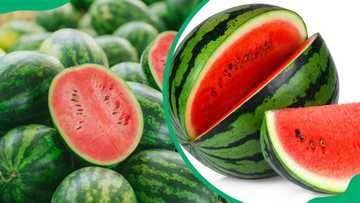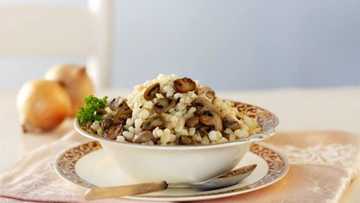How to pick a good cantaloupe: Simple tips for finding the sweetest, ripest fruit
A cantaloupe, scientifically called Cucumis melo, is a type of musk melon that is found in various regions of the world. The often underestimated fruit can be a nutritious addition to your daily diet, although it is sometimes tricky to pick the right one when visiting the grocery store. Learn how to pick a good cantaloupe in this comprehensive guide.
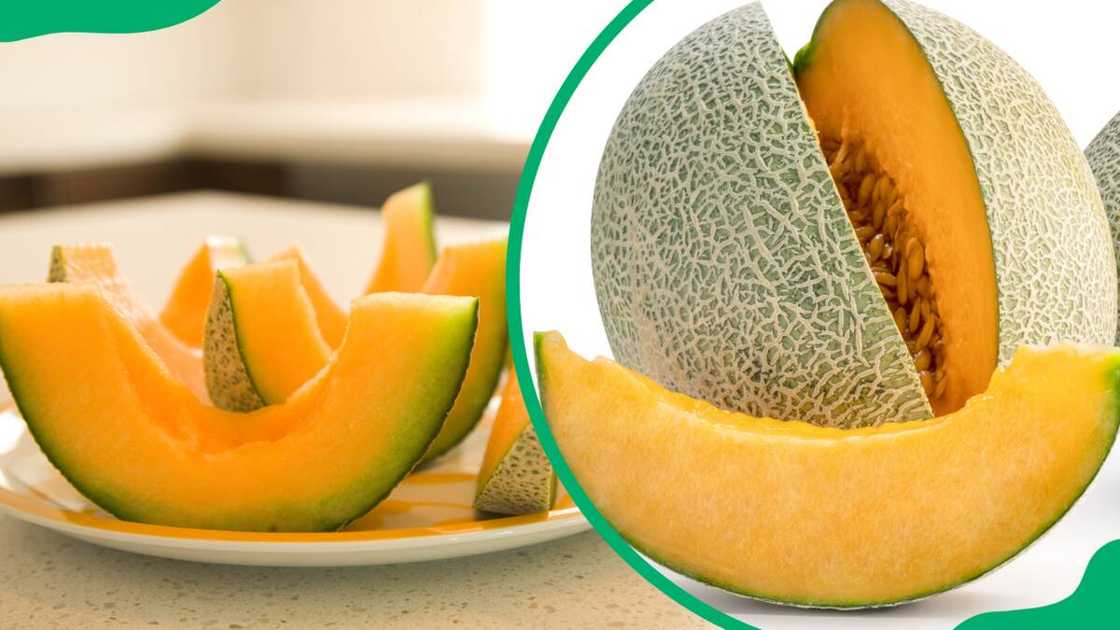
Source: Getty Images
TABLE OF CONTENTS
Cantaloupes are believed to have originated from Persia, Southwest Asia. The fruit is currently widely produced in Turkey, Spain, Australia, and the United States. The fruit is also grown in South Africa in the country's warm regions.
How to pick a good cantaloupe
Getting a good Cucumis melo is not easy because you cannot see the inside of the fruit. Here are some tips on how to tell if a cantaloupe is ripe and sweet;
- Stem attachment: Inspect the stem's attachment to the fruit. If it resists when you try to tug the fruit off the stem, leave it be and return in a couple of days. If it pops off easily, it is ready to harvest.
- Appearance: Look at the fruit's rind. Green indicates it is unripe. Opt for a Cucumis melo with a beige colour (tan, sandy gold, or yellow) beneath the net-like texture. Discolouration from where it rested on the ground is normal. The end where the stem was attached should have a slight dip. If it is flat, the cantaloupe likely is not ripe.
- The feel: Press where the stem was attached using your thumb. It should be firm but not too hard or too soft.
- Weight: If the fruit is ripe, it should be heavier than it looks, indicating that it is juicy
- Smell: A sweet, fragrant aroma near the stem end indicates ripeness.
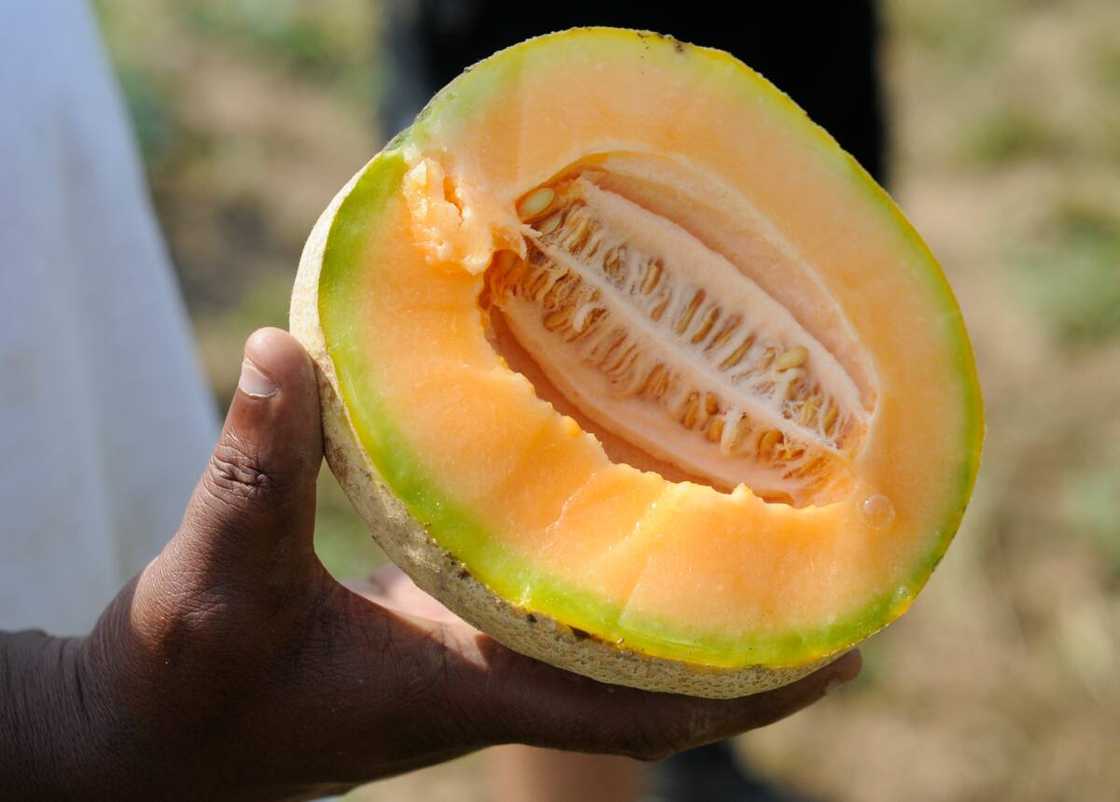
Source: Getty Images
How to ripen cantaloupe
Unlike fruits like bananas and avocados that ripen after being picked, a Cucumis melo must be picked at peak ripeness if you want to enjoy it as a juicy and delicious snack. Avoid harvesting it when the rind is still green and the stem is still firmly attached.
If the fruit has not ripened properly after picking it or purchasing it from the store, you can place it in a brown paper bag with a banana. Bananas are known to produce ethylene gas that ripens the fruit. Leave it for up to four days at room temperature for a sweeter and juicer outcome.
How to store a cantaloupe
Whole Cucumis melos should be kept at room temperature. Once you have cut them into slices or cubes, place them in an airtight container or plastic wrap, then store them in the refrigerator. The slices can stay in the fridge for up to three days.
How to cut a cantaloupe
To cut Cucumis melo, you will need a sharp knife, a cutting board, and a spoon, then follow these simple steps;
- Wash the Cucumis melo thoroughly using mild soap and a produce brush under running water. The surface of the fruit harbours pathogens, according to CSU, which can lead to listeriosis; hence, proper cleaning is crucial.
- Cut off the ends to provide a stable base for cutting
- Slice the Cucumis melo in half lengthwise
- Scoop out the seeds with a spoon.
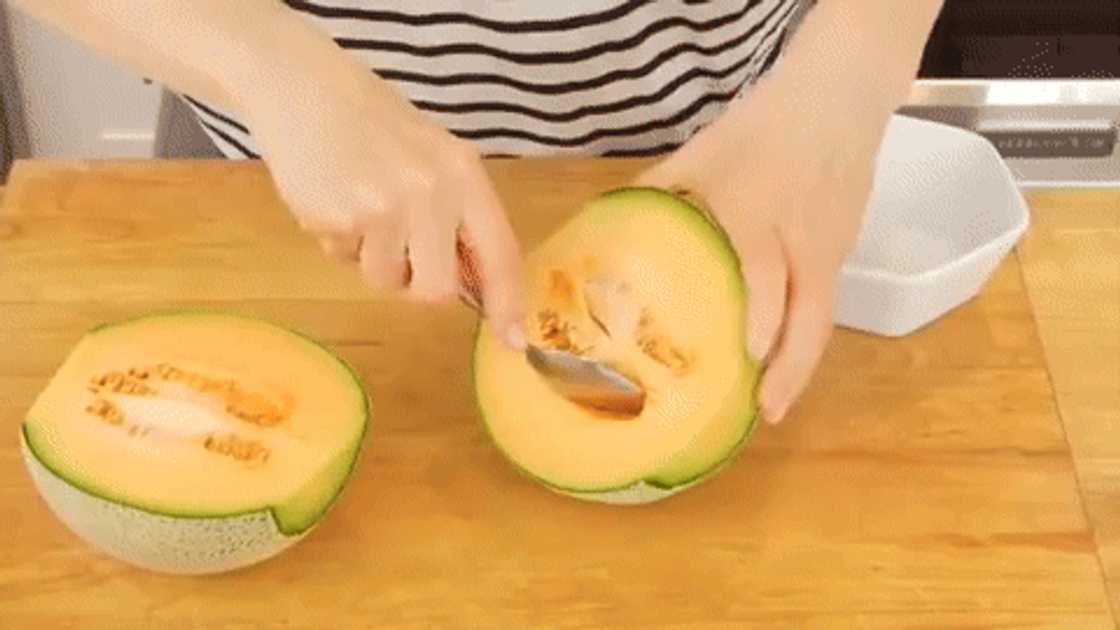
Source: UGC
- Cut each half into wedges, slices, or cubes.
- If desired, you can peel the rind off before slicing it.
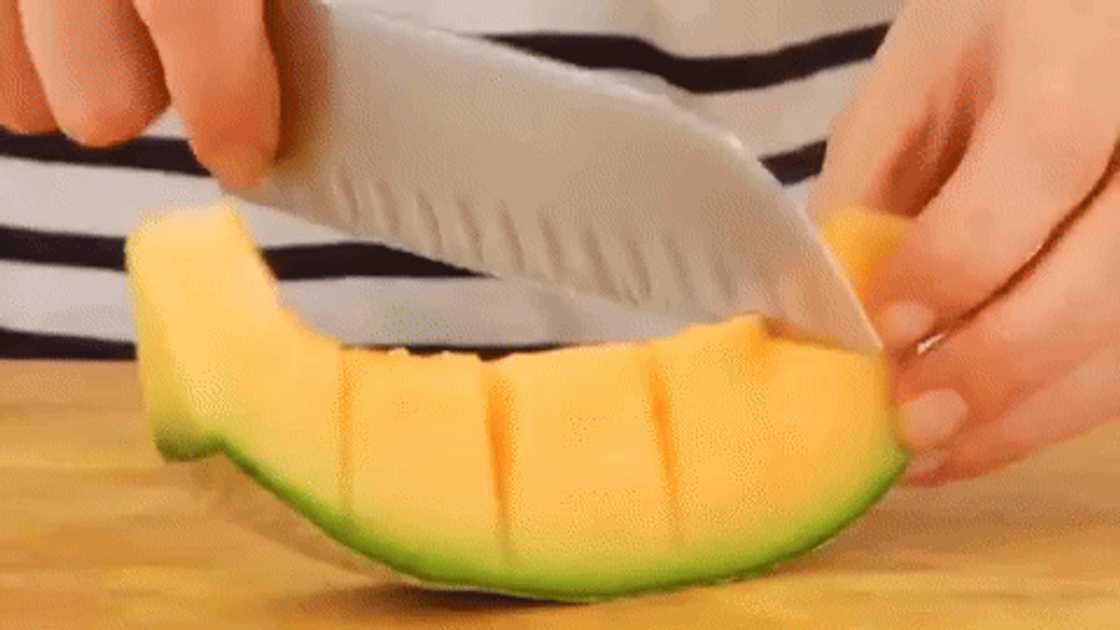
Source: UGC
How to eat cantaloupe
There are many ways to eat the musk melon fruit. Below are some ideas;
- Eat it as it is: Eating fresh Cucumis melo wedges or sliced cubes is the healthiest way to enjoy it
- As a smoothie. The fruit can be mixed with yoghurt and blended into a smoothie
- As a salad. Combine it with garnishes, other fruits, and fresh vegetables
- On a fruit platter: Make a presentation with other fruits like watermelons, mangoes, and apples
- With a prosciutto: Wrap the fruit slices with a prosciutto to make a delicious appetizer
- In dessert: You can use it in sorbets, fruit tarts, or ice creams
- Roasted: You can roast the fruit for an added unique flavour.
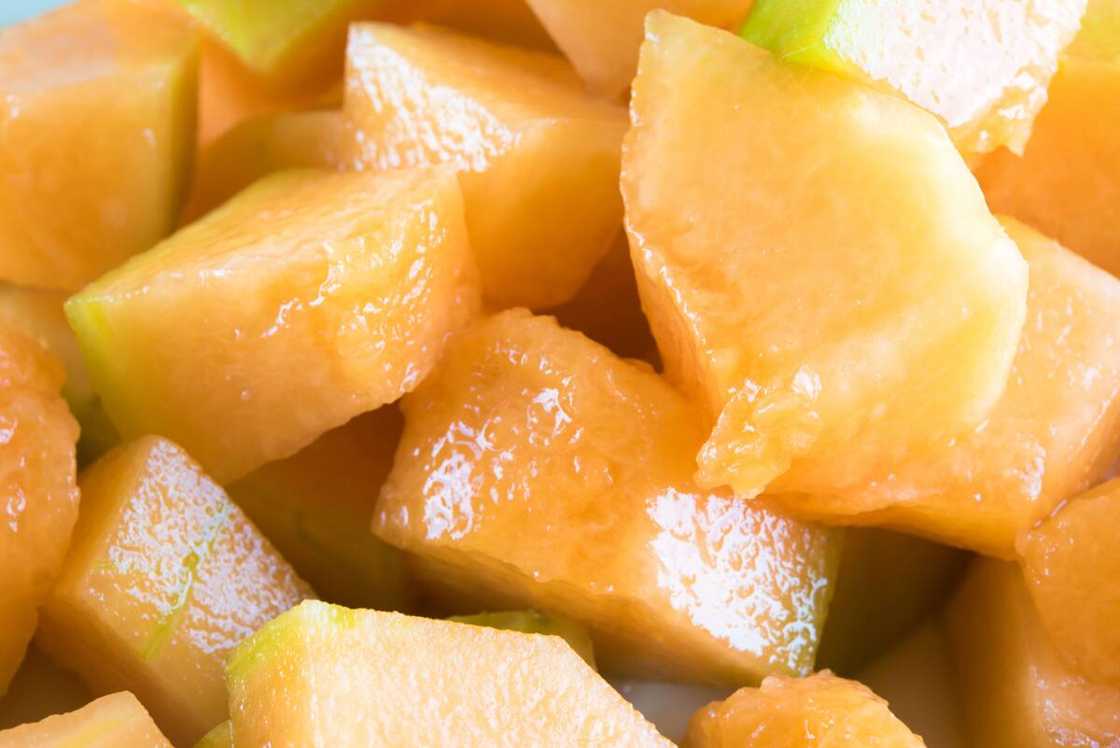
Source: Getty Images
Cantaloupe benefits
Cantaloupes have several nutritional benefits, according to various expert medical studies. Dietician and nutritionist Heather Mangieri reveals that a Cucumis melo is a source of multiple crucial nutrients for your body (via Live Science).
One cup of cantaloupe contains only about 55 calories (due to its high water content) but offers over 100% of your daily needs for vitamin A, over 50% of the daily needs for vitamin C, 1.5 grams of fibre and is a good source of potassium.
Their high water content (about 90%) makes them a perfect source of hydration during the summer. Vitamin A and C are important antioxidants. According to RD and CDN Amy Shapiro, the vitamin C content in Cucumis melo is about 95% of your daily needs (via Eat This, Not That!).
A cup of cantaloupe provides 65 milligrams of vitamin C, and the current dietary guidelines recommend that women get 65 milligrams of vitamin C per day while men aim for 75 milligrams.
Dietary fibre in Cucumis melo is crucial for digestion and helps slow down the absorption of sugars, hence high blood sugar control. The fruit also contains potassium, which is vital for cardiovascular health, according to Shapiro.
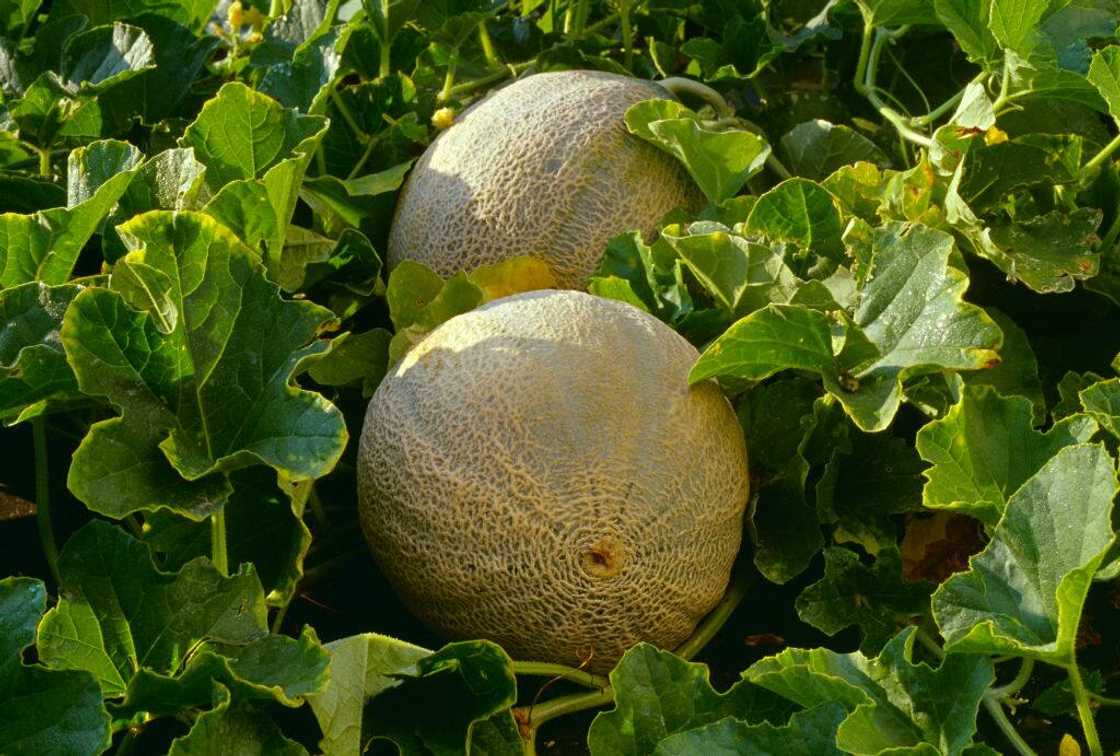
Source: Getty Images
FAQs
Choosing the right Cucumis melo is a mystery to many people, but it is crucial if you want to enjoy the sweet summer fruit. Here are some frequently asked questions;
When is a cantaloupe ripe?
It is crucial to know how to pick sweet cantaloupe at a store. The fruit is ripe when it feels heavier than its size, is slightly coarse, has a yellow or beige rind, the stem yields slightly to pressure and has a sweet, musky aroma.
Should cantaloupe be hard or soft?
Cucumis melo should be firm with a slight give at the stem end, indicating it is ripe and ready to eat. If it is too hard, it may need more time to ripen; if it is too soft, it might be overripe.
Should cantaloupe be yellow or green?
A perfect ripe cantaloupe should have a yellow, beige, or tan colour. If the flesh inside is green, then the fruit is not ripe yet.
What does a good cantaloupe look and feel like?
For its appearance, the exterior should be beige or yellow, while the area where the stem was attached should be smooth and slightly sunken. For its feel, ripe Cucumis melo should yield slightly when gently pressed at the stem end and be heavy for its size.
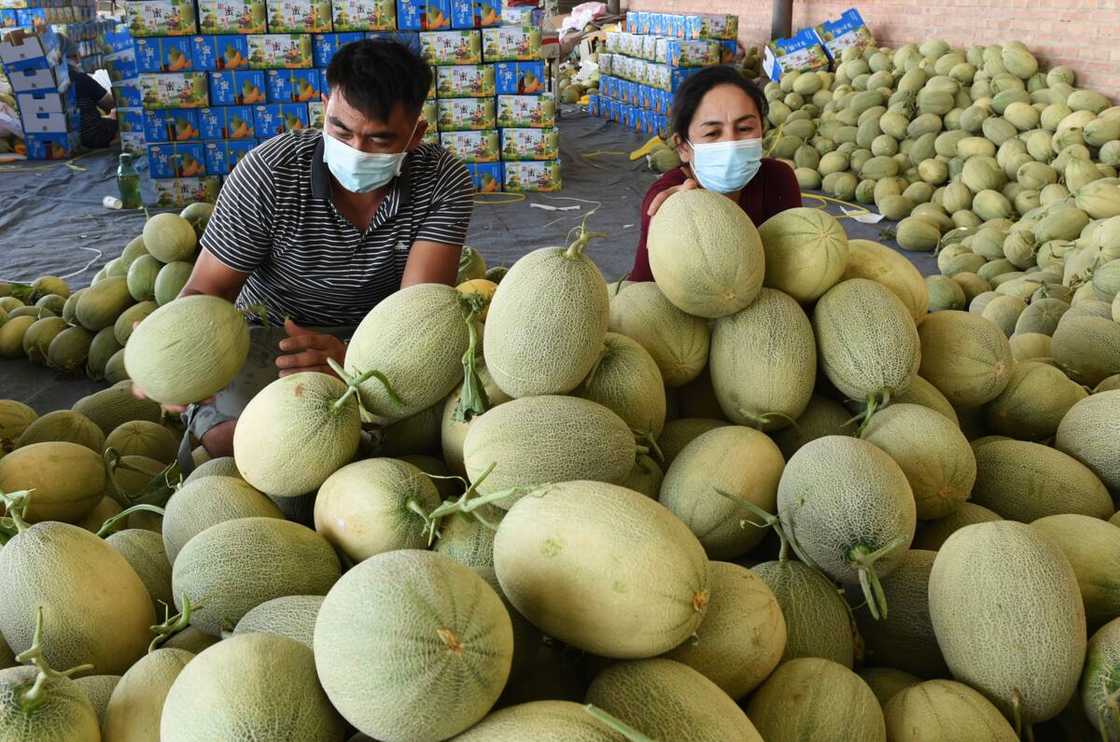
Source: Getty Images
Learning how to pick a good cantaloupe is a straightforward procedure. Make your next grocery store visit worth your while by choosing the right fruit.
READ ALSO: 25 fruit platter ideas to try: Unforgettable presentation
Briefly.co.za shared top ideas on how you can arrange your fruit platter. Factors to consider when presenting your platter include colour variety, shapes and sizes, grouping, and garnishes. Finding fruits that are in season will also make your work easier.
A fruit platter is the perfect way to entertain your guests while keeping it healthy. Check the article for more on how to create an eye-catching centrepiece for your next party.
Source: Briefly News

